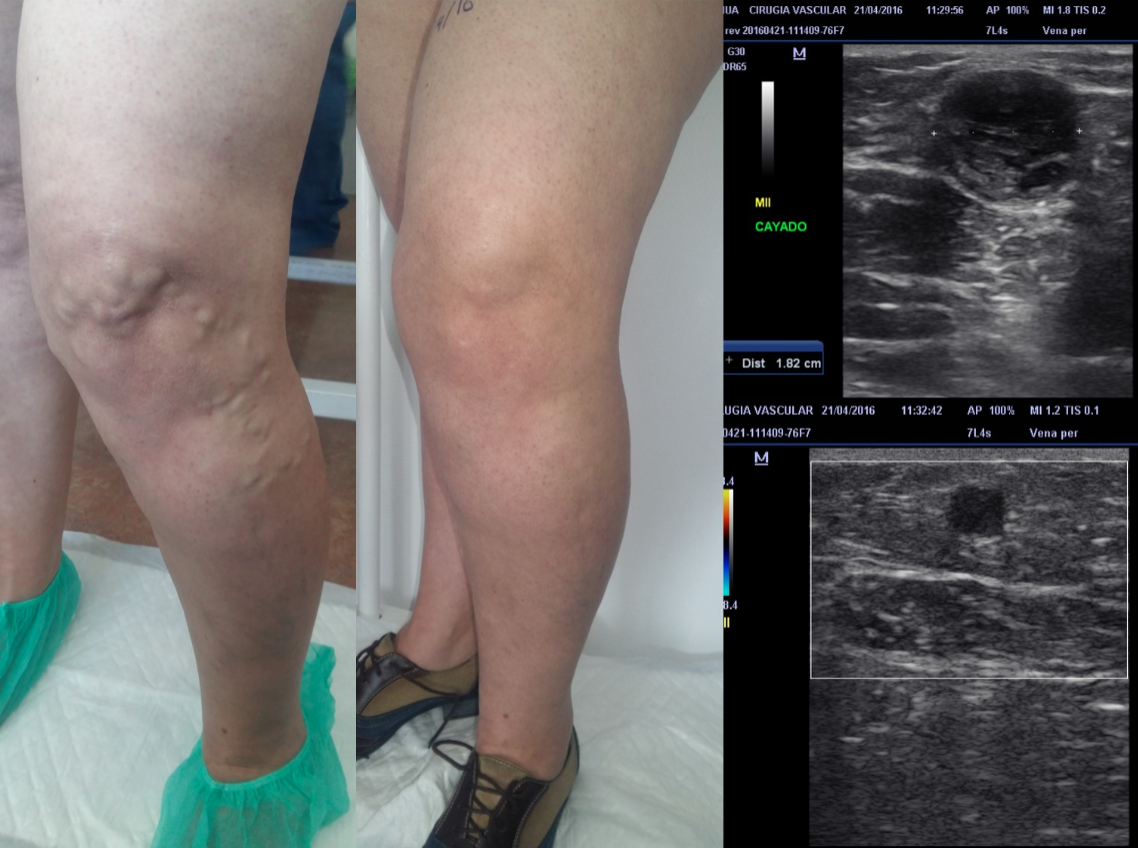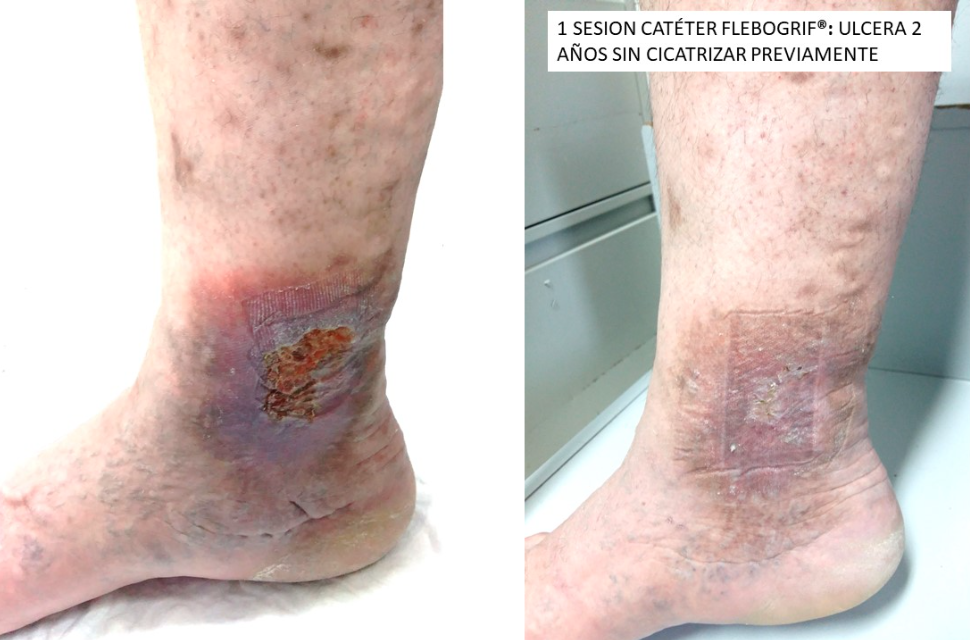Thick varicose veins or tributary varicose veins usually have a deeper origin, which is why it is essential to carry out a colour Doppler ultrasound scan at diagnosis. In most cases they come from an alteration in the veins known as greater saphenous (internal saphenous) or lesser saphenous (external saphenous).
These main venous axes of the superficial venous system have an alteration in their valves. These valves prevent the blood from «falling» towards the feet, when it should be returning to the heart. In patients with thick varicose veins, these valves are often damaged so they do not perform their function. This causes all the other veins that lead to the saphenous veins to dilate due to an accumulation of blood that does not return correctly.
What does the treatment consist of?
First of all, it is necessary to distinguish whether the thick varicose veins come from an alteration in one of the saphenous veins or not. If there is evidence of saphenous vein dysfunction, in order to obtain a good result, it is necessary to annul the vein using an endovenous technique with a catheter.
Endovenous techniques can replace and even surpass conventional surgery, which consists of stripping the pathological veins.
At Delarra we can offer all types of endovenous catheter techniques:
● MOCA (mechanical-chemical occlusion): Clarivein®, Flebogrif®.
● Glue occlusion (cyanoacrylate): Venablock®, Venaseal®.
● THERMOABLATION: Latest generation NeoV 1940 endovenous laser.
Dr Cosín is an international reference and trainer of users in some of them (Clarivein®, Flebogrif® and Venablock®). He has performed more than 1000 Clarivein® cases and collaborates with Merit Medical (South Jordan, UT USA) in the dissemination and improvement of this procedure.
Once the source of the problem has been controlled, after treating the diseased saphenous vein, the most visible thick varicose veins undergo ECO-GUIDED FOAM SCLEROSIS.
This treatment is carried out in sessions, in which a small needle is used to inject the sclerosing foam well distributed in the varicose veins. The eco-guided injection consists of choosing the exact injection site of the product by means of the ultrasound image.
In specific cases in which we wish to complete the entire treatment in ONE SESSION (e.g. patients who live far away), this is also possible.
We combine endovenous catheter treatment with surgical microphlebectomy to eliminate varicose veins in a single procedure..
BOTH LEGS CAN BE TREATED ON THE SAME DAY.





